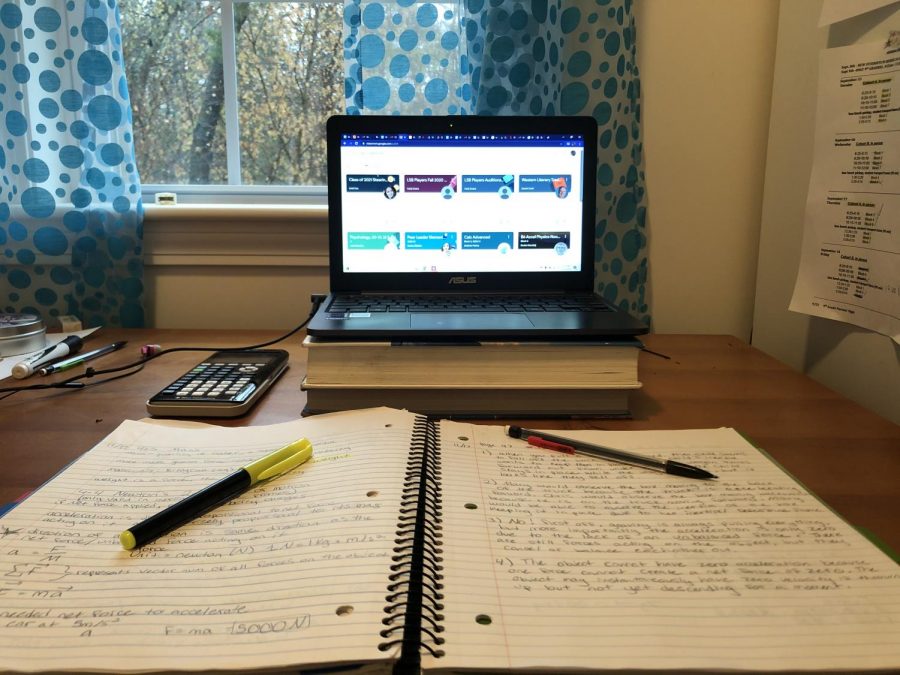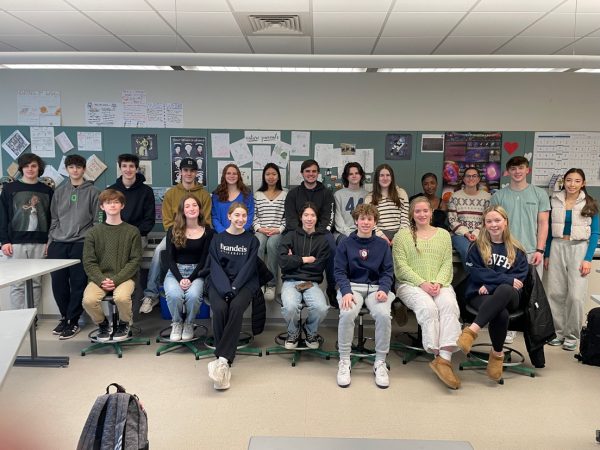Why Is Everyone Switching to Cohort R?
Studying for a Midterm
Jess Crane would like to see her grandmother this Thanksgiving.
She’d like to hug her older brothers when they come home from college. And she’d like to attend physics class without worrying about a virus swirling in the air around her.
Weighing these hopes and worries amidst the COVID-19 pandemic, Crane, a senior at Lincoln-Sudbury Regional High School, made the difficult decision to go remote. She held off until Senior Dress Up Day to officially switch from Cohort A to R, wanting to savor one last school tradition before being confined to her house. Crane knew that social interaction is what she would miss most about in-person school.
Now, Crane goes to all her classes from home, participating virtually through Google Meet. This way, she can safely spend the holidays with her high-risk grandmother, whom she hasn’t seen in months, and not stress over any potential viral exposure she’s had at school. She can hang around with her brothers, who have been tested weekly at their universities, and not worry about what her own test result might be.
That doesn’t mean that the transition has been easy.
“I really want to get back in the building,” Crane says already. “I love L-S, I love the community, I love seeing people. That’s what’s been hard as an extrovert being in the house all the time.” At least she gets to go to physics in her pajamas, she adds with a look to the bright side of her remote experience.
Crane is just one of the many students at L-S navigating the ups and downs of remote school this fall. With COVID cases on the rise in Massachusetts, more and more students are moving away from L-S’ hybrid in-person learning model and joining Cohort R. Instead of coming to school two mornings a week, remote students stay at home every day, attending high school through a screen. According to Virginia Blake (Coordinator of Curriculum, Scheduling, and Assessment), L-S currently has 249 fully remote students, about 16% of the student body. That number is an increase from the 140 students who initially chose remote in August.
“The rate picked up a bit at the end of October but then slowed down,” Blake notes about the uptick in Cohort R enrollment.
There has been a significant shift to remote learning among students in L-S’s METCO program. Currently, 55 of the program’s 91 students are in Cohort R, compared to about 30 remote students at the start of the school year. Shelly Hinds, L-S METCO director, explains why many students in the program have made the switch.
“I think that a lot of families are very anxious, nervous about the state of things with COVID,” she says. “Numbers in Boston have increased. Boston’s in the red.” For students in the METCO program to attend in-person school, they have to make the commute from Boston to Sudbury by bus. Additionally, because Boston hybrid students have a long ride home, they have to remain at school for all of their afternoon Google Meets.
“Parents are trying to make really difficult decisions about whether to put students on buses, and things of that sort, for such an extended period of time,” Hinds says. She adds that some of her students have even lost family members.
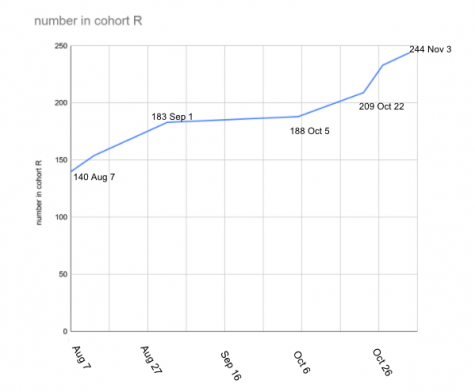
Administrator Emeritus Sandy Crawford, who oversees the remote students’ program, explains that families are not required to tell the school why they chose remote: “The way the state set up the regulations, all families have the right to go remote during COVID,” she says. Under these flexible guidelines, there are lots of reasons to make the switch.
Jenson Martin, a freshman at L-S, wanted to protect fellow students and teachers from himself. Martin goes to baseball three times a week in Dedham, which he describes as a virus hotspot. As a Cohort B student, Martin worried that he would end up spreading COVID to his friends at school.
“If I can pay attention at home, learn just as much at home, and not risk getting my peers sick, then there’s no reason I shouldn’t be at home,” he says. Now fully remote, Martin can play his sport while keeping the school community safe.
The school makes it simple to switch; once a student notifies their Associate Principal, the scheduling department figures out the logistics.
“There are some FATA classes that a student can’t take if they move to Cohort R, like Ceramics, so then the student’s schedule has to change,” Blake details. “The student also gets added to a special Wellness class because of the way the Wellness teachers are working with fully remote students. The scheduling staff then lets the teachers know that the student has moved to Cohort R.” In a matter of days, the transition is complete.
“The process of switching was pretty smooth,” says junior Madison Johnson, who recently went remote. “At the beginning of one week, I went to school in person, and then by the end of the week, I was fully remote and doing all my classes online.” The switch was quick, but for Johnson, making the decision took a long time. She agonized over the choice for months.
“Since the beginning of the year I had been debating about switching to remote because I was worried about getting sick and risking my health and my family’s health,” she explains. “There are pros and cons to hybrid and remote, and for a while I couldn’t decide which was the better option.” In the end, Johnson reasoned that “being remote is only temporary, but the effects of the coronavirus can be permanent.”
The scheduling department works hard to ensure that switching to remote isn’t permanent. Cohort R students have the option to transfer to hybrid, although the process is a bit more complicated to get back in the building. If a student is moving into Cohort A or B, there might not be room in the same cohort in all of their classes; their schedule would need to be adjusted.
This remote model, which allows students to easily switch in and out of Cohort R, is relatively new. Over the summer, L-S originally planned to place all remote students in a special program called the Remote Academy. But before school even started, it became clear that the design wasn’t going to work. Within the Academy, remote students would have been completely separated from hybrid cohorts, only taking classes with others who were fully remote. They also wouldn’t get access to L-S’s signature breadth of class choices.
Blake explains the puzzle that the planning team faced during the summer: “Suppose there are 10 students scheduled to take American Lit, 5 for Irish Lit, and 5 for Adolescents in Lit. We would have to put all of those students in one class, and it would be hard to figure out what class to teach them, since any of them might have already taken the other classes.” With these challenges and constraints, it simply was not possible to create remote classes that would meet the varied needs of L-S students.
Some students initially chose hybrid to avoid the limited course availability within the Remote Academy model, but have since switched into Cohort R, given that they can now access any L-S class. Sophomore Amelia Quinn explains why she felt confident in going remote with the school’s current model.
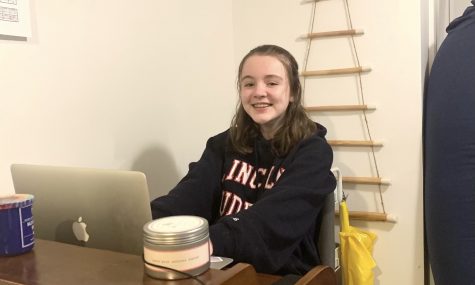
“The main reason why I didn’t do remote was no longer a factor,” she says, referring to the drawbacks of the Remote Academy, “because it’s now the same thing as hybrid. You’re just logging into the Google Meets instead of going to the actual live classes.” Now enrolled in the courses she originally hoped to take, Quinn feels that she’s receiving the same level of instruction as a hybrid student.
Junior Aneesha Sharma echoes the sentiment: “Most of my classes have me tune into the classroom, so I’m still participating in some discussion if there is any,” she says. “I’m still listening to the lectures, as if I was in class. It’s just from the safety and comfort of my home. I can just focus more, because I don’t have to worry about the place I’m in.” It’s been a month since Sharma went remote, and she seems to be thriving in an at-home environment; she gets more time, more work done, and the whole house to herself.
“I hadn’t seen anyone for eight months, and I was okay with it,” she explains. “I’m not someone like I need to see people once a week or else I’m going to go crazy. I’m okay with just staying at home and quarantining.” Not all Cohort R students share Sharma’s comfort with solitude; extroverts like Jess Crane and Jenson Martin ache to return to the school building when it’s safe.
“It’s difficult to go from seeing people, especially in choir where everyone’s talking . . . to being alone in my little office in the other room,” Crane says.
It’s also not easy for all Cohort R students to stay motivated in a remote setting.
“The ones I worry about are the students who were doing extremely well in person, before all of this happened, and they’re struggling now,” says Shelly Hinds. “And it’s time management; it’s all of those things that we think we’re great at until a situation causes us to have to really live that.”
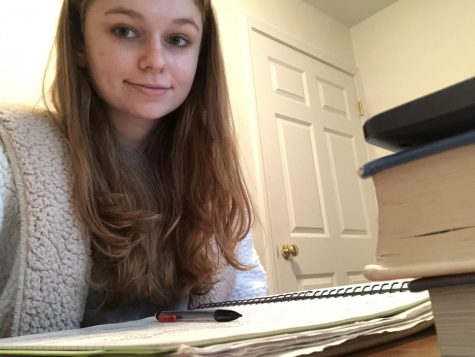
Amidst a range of feelings about remote school, many Cohort R students are looking ahead to their eventual return to hybrid. Crane dreams of rejoining Cohort A when the weather is warmer and virus hospitalizations are down. She hopes to participate in some sort of makeshift senior week at the end of the school year.
“I’m very optimistic about 2021,” she says. “There’s a vaccine in the making.”

